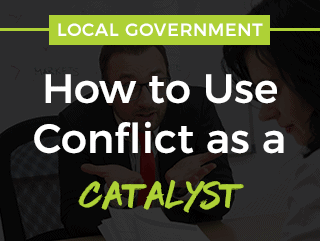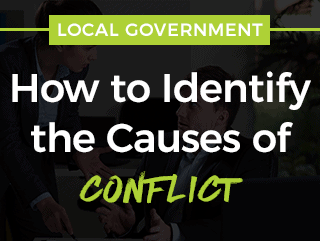Local Government Quick Tips: Skills to Influence Others

Welcome to this episode of our CivicExcellence “Quick Tips” on how to effectively influence others.
The ability to influence is crucial to personal and professional success – especially in local government. At the elected official level, influencing skills directly impact whether or not you’re successful at championing the issues that are important to you and your community. At the management level, strong influencing skills will make you a better leader in your department and help ensure effective service delivery.
We influence others every day whether we’re doing it intentionally or not. Every interaction is an opportunity to identify the behavioural and personality styles of others and learn how to optimize the impact of your influence.
Effective influence requires an awareness of your natural style, plus effective skills to enable your influence to be received effectively.
There are four main styles used to influence others:
Aggressive Driving styles
These individuals like to use a fast pace and force to achieve outcomes. They will often be comfortable in bargaining to achieve success, without needing to reflect or think quietly. Passive ‘Pulling’ styles – Like to use a slower and quieter approach to achieve an outcome.
These individuals will use non-coercive tactics such as seeking to motivate, enthuse, and involve the other person, and will often use careful listening techniques.
Analytical styles
Like to use evidence, experience, and facts and figures to achieve a logical outcome. These individuals will seek to use the logical balance for and against a reasoning. There is generally a strong focus on the task at hand.
Emotional or ‘People’ styles
Like to put relationships before anything else (including the task, the goal, facts, ideas, etc.). These individuals tend to build an understanding of the other person and achieve some degree of personal and emotional empathy as a priority.
Think about which style is your “natural style” meaning the one you rely on most often. Consider how you adapt your style to the situation. Are you using a style which allows others to hear and understand your perspective? Influencing, like every other skill, can be learned.
Many people are intuitively good influencers, they can easily influence or change the thinking of other people.
Changes in thinking can result in a change in behaviour, which in turn can change attitudes.
There are a number of skills that contribute to someone’s ability to effectively influence, including communication, listening, persuasion, assertiveness, negotiation, conflict resolution and problem-solving.
Trying to improve a skill, like influencing, head-on can feel daunting. So focus your efforts on improving the primary skills that lead to strong influencing instead.
We recommend starting with these four steps to effectively influence others.
Step 1. Focus on your listening skills
Identifying the facts and underlying meaning of what other’s are saying Listening not to respond, but to truly understand “What do they know or believe that makes them see this differently than I do?”.
Step 2. Be conscious of how you seek clarification
Demonstrate curious questioning to gain a deeper understanding of what someone is saying. Phrases such as “Can you help me understand…?”
Step 3. Be self-aware about how you’re giving feedback through verbal and non-verbal cues
This requires self-management of your body language and facial expressions to demonstrate an openness to changing your own perspective.
Step 4. Demonstrate understanding by effectively summarizing
Reflecting the other person’s point of view back to them





